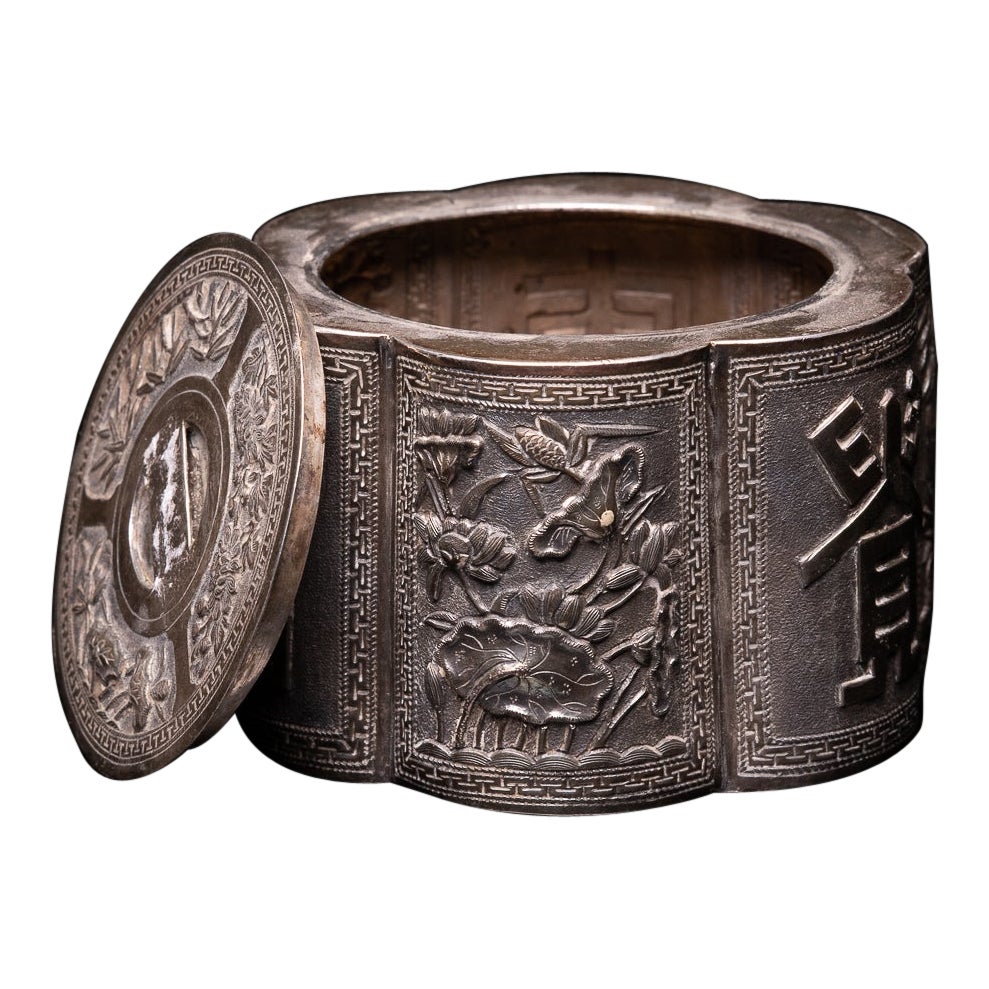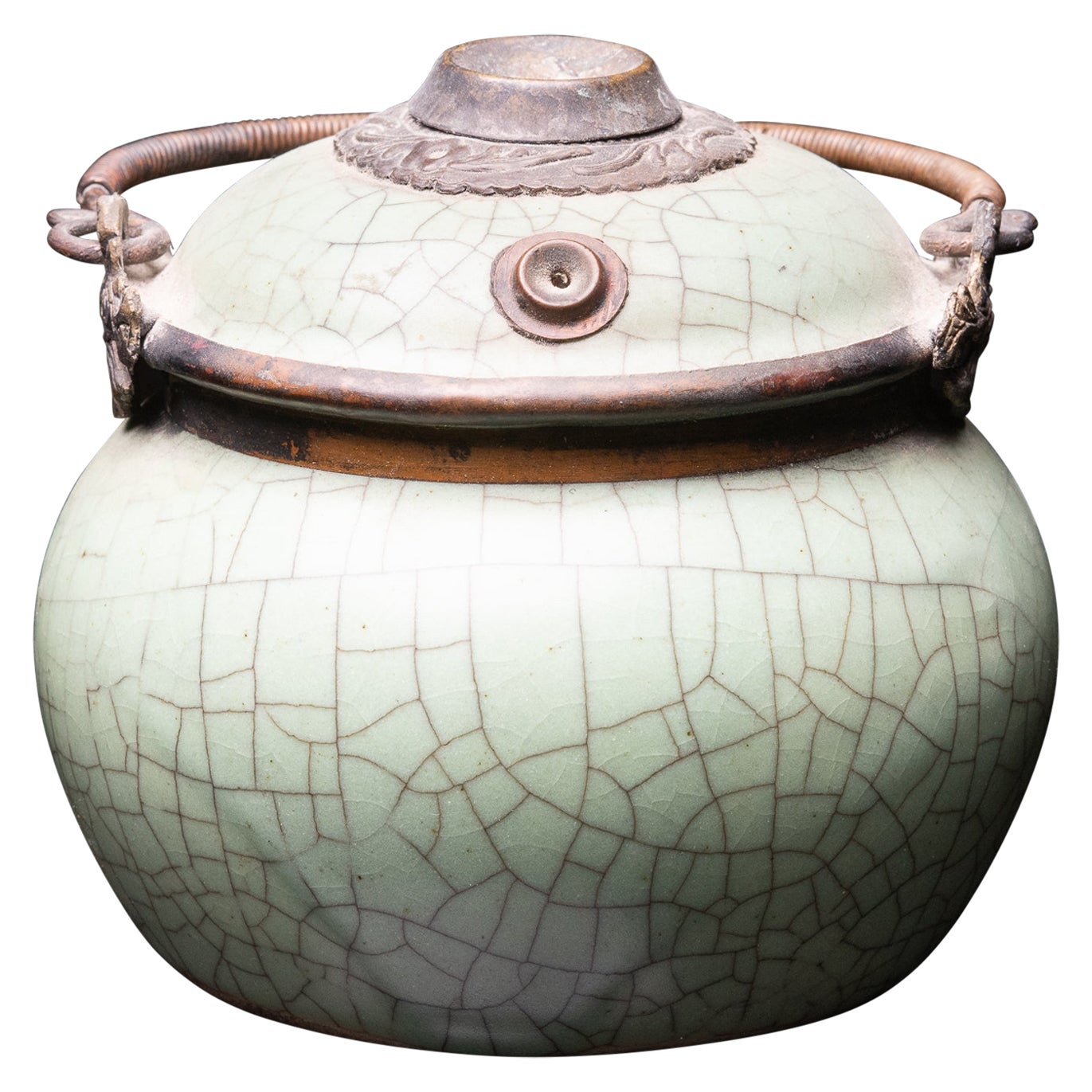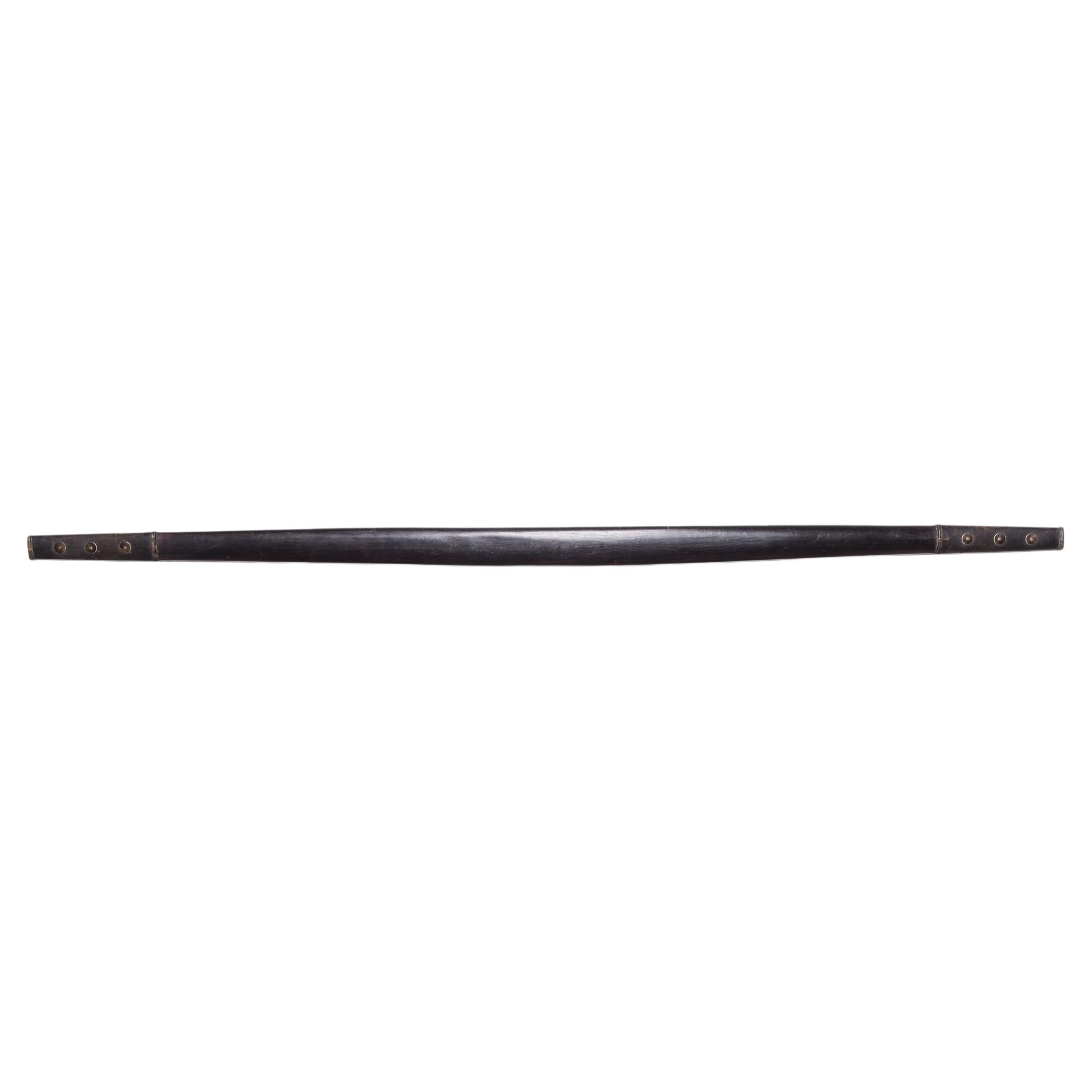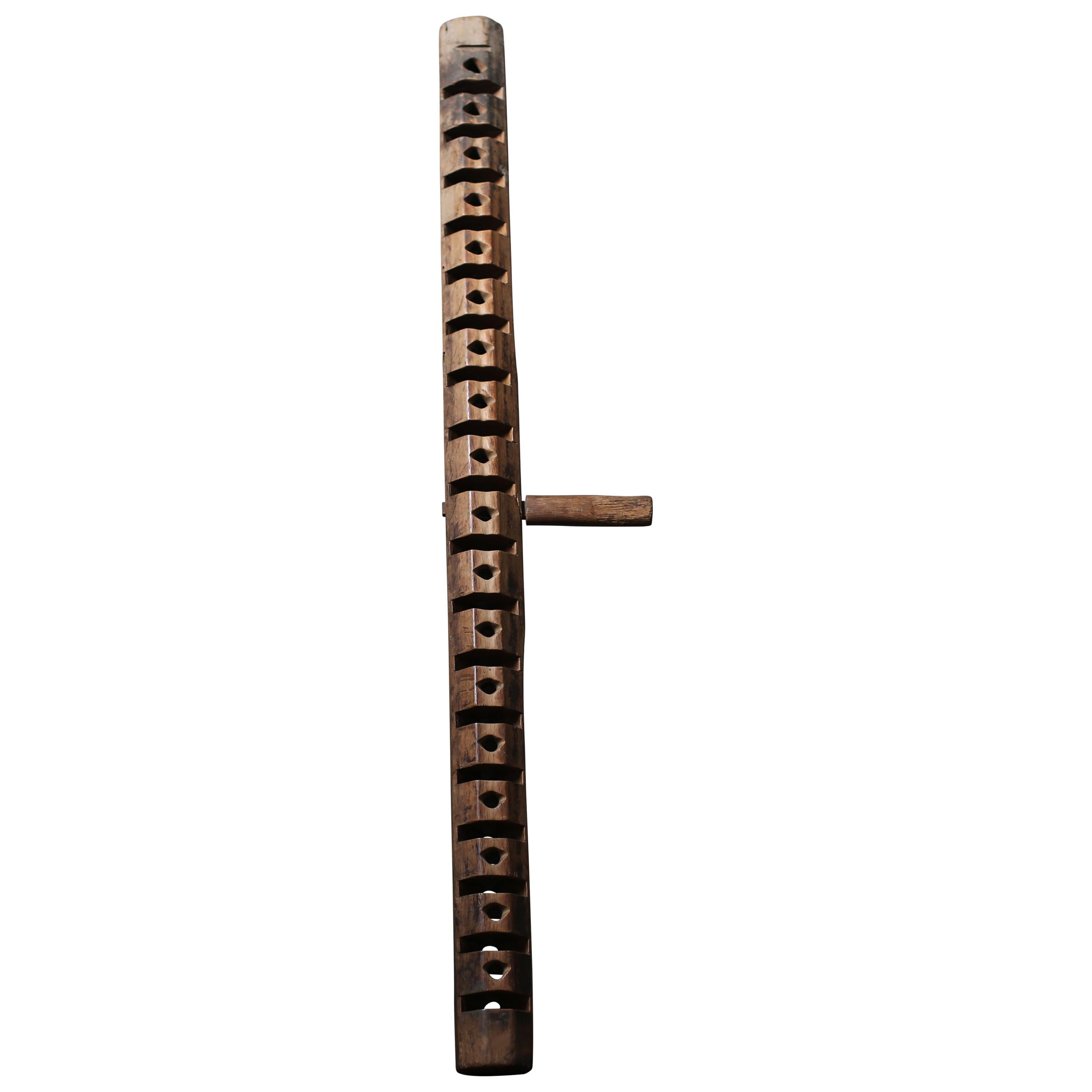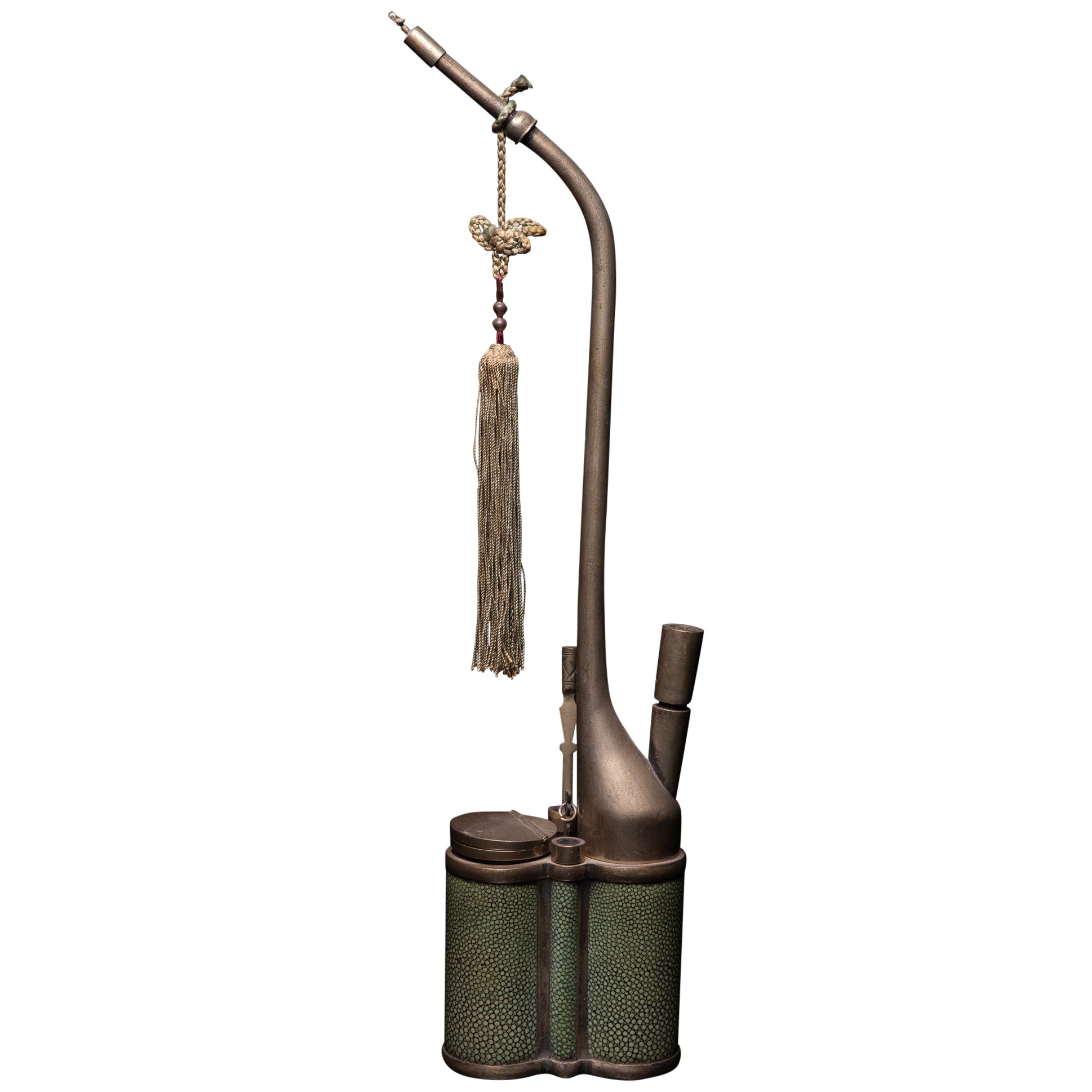Items Similar to Two Glass Inlay Pairs
Want more images or videos?
Request additional images or videos from the seller
1 of 6
Two Glass Inlay Pairs
About the Item
Two pairs of two halves from the same bar, finely detailed, with pointed ears and eyebrows, opaque yellow face, opaque red on the mouth, nose, eyes and ears, translucent cobalt blue edges to the mouth, nose and ears, with translucent emerald green leaves above and between the translucent cobalt blue brows and eye line, translucent pink pupils, with translucent cobalt blie and opaque white snake scales below the face, in translucent cobalt blue matrix, cut in the lower part of a cartouche design.
These rare heads might represent the Agathos Daimon, the tutelary deity of Alexandria, who was also identified with Serapis, the male counterpart of Isis-Thermouthis (who in turn was a graecisized form of the early snake harvest goddess Renenutet). In a statue of Isis-Thermouthis in Alexandria museum (no. 25773, ex-collection King Farouk I), reproduced in Gotten, Pharaonen, no. 151, the snake goddess is shown carrying the cornucopia, the horn of plenty. This representation of the daimon shows green vegetation above the eyes and satyr’s ears as well as distinct uraeus nose and scales beneath. It has also been cut in a way to suggest that it wore a headdress above.
Condition
Hairline crack to one pair, otherwise in an excellent state of preservation.
Published
The Per-Neb Collection (Part II), Ancient Egyptian Glass Inlays, Christie’s, London, 7 July 1993, Lot 45 & Lot 45a.
Provenance
Previously in the Private Collection of Achille Groppi (1890-1949), Egypt and Switzerland, acquired in the 1920s-1940s.
Thence by descent.
Sold at: The Per-Neb Collection (Part II), Ancient Egyptian Glass Inlays, Christie’s, London, 7 July 1993, Lot 45 & Lot 45a.
Private Collection.
ALR: 12778.11.WK. With IADDA Certificate, this item has been checked against the Interpol database.
- Dimensions:Height: 1.26 in (3.2 cm)Width: 0.4 in (1 cm)Depth: 0.4 in (1 cm)
- Materials and Techniques:
- Place of Origin:
- Period:
- Date of Manufacture:circa 1st Century B.C.
- Condition:Wear consistent with age and use. Hairline crack to one pair, otherwise in an excellent state of preservation.
- Seller Location:London, GB
- Reference Number:1stDibs: LU5517231878282
About the Seller
5.0
Vetted Seller
These experienced sellers undergo a comprehensive evaluation by our team of in-house experts.
Established in 1910
1stDibs seller since 2020
- ShippingRetrieving quote...Ships From: London, United Kingdom
- Return PolicyThis item cannot be returned.
More From This SellerView All
- Anglo-Saxon Hanging BowlLocated in London, GBA very rare and near-complete copper-alloy hanging bowl and associated fittings. Crafted from a single sheet of bronze, the body of the bowl is curved, with a slightly recessed lip. ...Category
Antique 15th Century and Earlier English Antiquities
MaterialsBronze
- Bronze HoardLocated in London, GBDagger L: 27.8 cm, Luniform bronze, possibly a belt buckle L: 10.8 cm, Shield-shaped bronze with a point Diam: 6.5 cm, Pommel Diam: 3.7 cm, Violin-bow brooch L: 17.5 cm, P-Shape...Category
Antique 15th Century and Earlier European Classical Roman Antiquities
MaterialsBronze
- Megalithic StelaLocated in London, GBA tall anthropomorphic stele of carved granite, divided into two distinct regions of the body and face. The body is a single unarticulated block, but the facial features are outlined...Category
Antique 15th Century and Earlier European Antiquities
MaterialsGranite
- Statuette of the Goddess NeithLocated in London, GBBronze statue of the goddess Neith, striding, her left foot extended forward. Her left hand is extended forward and formally held a papyrus sceptre, a fragmentary ankh is visible in her right hand. She wears a close-fitting sheath dress, incised with a broad usekh collar, and carefully engraved bracelets and armlets. On her head is the Red Crown of Lower Egypt, decorated with vertical striations and restored spiral and spire. Her face is finely molded, with a broad upturned nose and electrum-overlaid eyes and eyebrows. Neith was one of the earliest recorded gods in the Egyptian pantheon, worshipped from early in the Predynastic era through to the arrival of Roman rule. A war goddess and goddess of weaving, she was the patron goddess of the Red Crown of Lower Egypt and the city of Zau (Sais, in the 5th Nome of Lower Egypt) in the Delta. A powerful and popular goddess, she was, according to the Iunyt (Esna) cosmology, the creator of the world and the mother of the sun, Ra. This made her the mother of all of the gods, who often came to her to settle their disputes. Her symbols are the bow and arrows and a sword and shield as a war goddess, a weaving shuttle as a funerary goddess, and the Red Crown of Lower Egypt as the goddess of creation and mother goddess. She is usually depicted as a woman wearing the Red Crown of Lower Egypt, however, she is occasionally depicted as a cow in connection with her role as the mother of Ra. The use of electrum, a naturally occurring alloy of gold and silver sometimes called ‘green-gold’, for the eyes speaks to the high status of the object. Electrum had been used by the Egyptians since at least the 3rd millennium B.C., but, give its rarity, was reserved for the most expensive and important objects. Most electrum used in Egypt was imported from Nubia, though some was found there. Published: Parke-Bernet Galleries, New York, February 25th, 1971, no. 70, illus. Sotheby’s, New York, June 5th, 1999, no. 31, illus. David Aaron Ltd...Category
Antique 15th Century and Earlier Egyptian Egyptian Antiquities
MaterialsBronze
- Bronze SirenLocated in London, GBSirens were dangerous bird-like females who tempted sailors with their hauntingly beautiful song. In Homer’s Odyssey (XII, 39) Odysseus and his sailors were warned about the lethal c...Category
Antique 15th Century and Earlier Greek Classical Greek Antiquities
MaterialsBronze
- Ushabti for ImenmesLocated in London, GBA mummiform ushabti in blue faience. Four registers of hieroglyphic characters are painted around the lower half of the ushabti, with a vertical column of hieroglyphs in the centre o...Category
Antique 15th Century and Earlier Egyptian Egyptian Antiquities
MaterialsFaience
You May Also Like
- Antique Chinese Multi-Lobed Opium Box in Silver, Decorated with Reliefs with IdeLocated in Leuven , BEBeautiful opium box decorated with reliefs with ideograms (one of the two refers to wealth), a chrysanthemum (symbol of longevity) and foliage. This silver m...Category
Antique 19th Century Chinese Antiquities
MaterialsSilver
- Green Crackled Porcelain Table Water Pipe with Metal Strapping from VietnamLocated in Leuven , BEThe bowl of the Vietnamese water pipe is jar-shaped. The metal handle allows easy carrying and moving of the object. The pipe stem that is normally places in the water tank, is missi...Category
Antique 19th Century Chinese Antiquities
MaterialsPorcelain
- Kadjar Lacquered Paper Mache BoxLocated in Beuzevillette, FRBeautiful lacquered paper mache box decorated with imaginary animals (that look like cats) and plant motifs. The box seems to take the shape of a vege...Category
Early 20th Century Antiquities
MaterialsPaper
- Provincial Chinese Burden Bar, c. 1900Located in Chicago, ILUsed to tote pails of water and grain, this 19th-century yoke, or burden bar, transcends its utilitarian origins as a striking sculptural object. Fitted with the original brass finis...Category
Antique Late 19th Century Chinese Qing Antiquities
MaterialsBrass
- Japanese Antique Wooden ObjectLocated in Sammu-shi, ChibaAn old tool for making textiles in Japan. It's a very rare object. The light and shadow that pass through the even holes are very beautiful. A nice art ob...Category
Antique Late 19th Century Asian Meiji Antiquities
MaterialsOak
- Nineteenth Century Chinese Metal Water Pipe, Covered with Green Dyed Ray SkinLocated in Leuven , BEThe Chinese water pipes for smoking opium or tobacco could be beautifully decorated with enamel or be coated with precious materials such as ray skin. How were they used? The heated opium was placed in the lidded well of the pipe. The smoker could inhale the fumes through this pipe. Most water pipes have a holder for storing the maintenance tools, such as a little brush, a spike and tweezers. The water pipes could easily be smoked while sitting down, unlike the regular opium pipes...Category
Antique 19th Century Chinese Antiquities
MaterialsMetal
